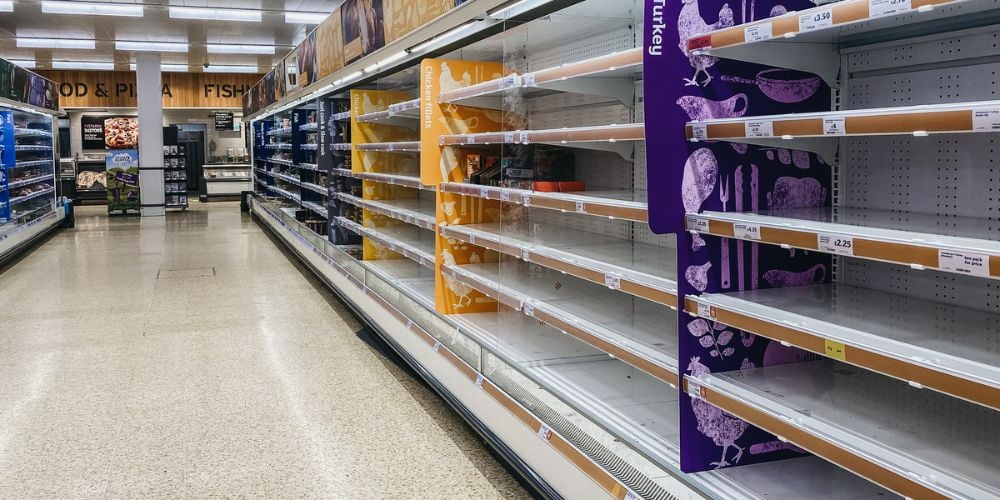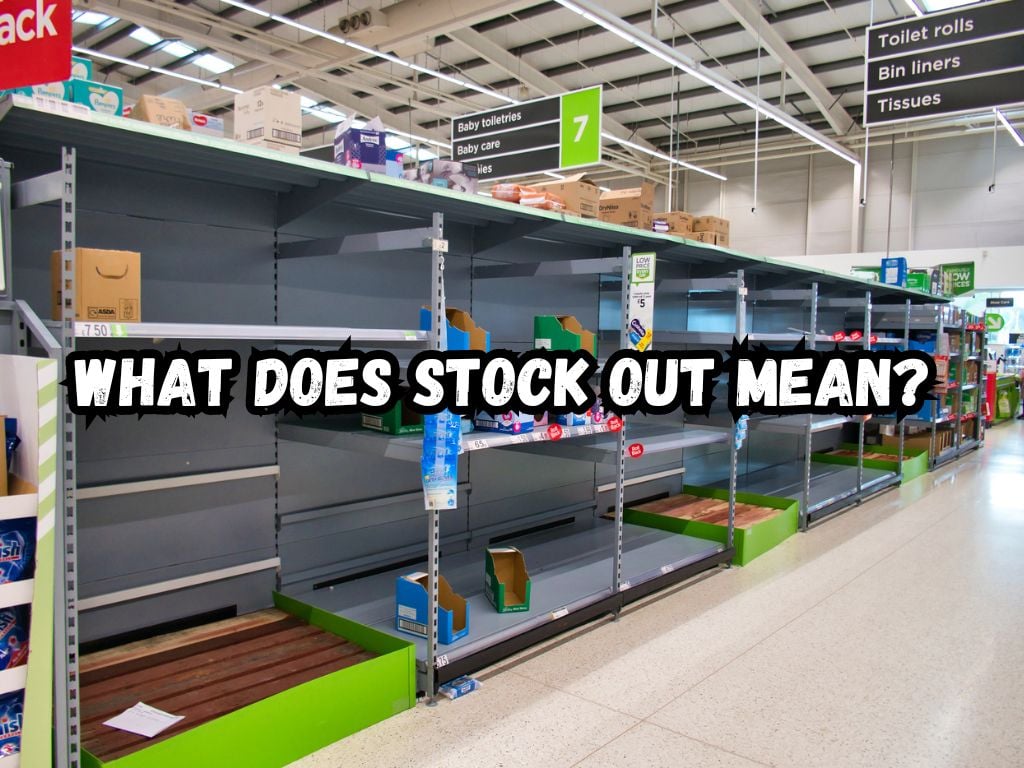The term ‘stock out’ is essential in the territories of inventory management and retail operations. It describes a situation where there are no products available for sale, caused by a mismatch between the items on hand and the items needed.
Its understanding is vital for businesses looking to maintain customer satisfaction and avoid profit losses. This article will explore what stock out means, its impact, and how to prevent it.
What Does Stock Out Mean?
A stock out occurs when the demand for a product exceeds the supply, and the inventory is depleted to zero.
While it is often confused with out-of-stock or backorder situations, a stock out signifies a complete absence of the product, with no immediate restock date. It can halt sales and signal deeper issues in inventory control and supply chain management.

Causes of Stock Outs
The reasons behind stock outs vary, ranging from simple errors to complex supply chain challenges. Inadequate inventory management can result from improper stock level monitoring.
Increased demand may lead to forecasting errors where businesses underestimate the required stock. Supplier-related problems such as delays or quality issues also contribute to stock outs.
Inaccurate inventory data can mislead management, while seasonal demand fluctuations further aggravate the situation. Each of these causes disrupts the delicate balance of supply and demand.
The Impact of Stock Outs
On Businesses
For a business, a stock out is more than just an empty shelf; it’s lost sales and potentially lost customers. It impacts cash flow and can increase operational costs to resolve the issue.
Customer loyalty may wane after repeated stock outs, putting the company’s reputation at risk. Competitors gain an edge in such scenarios, as customers seek alternatives, potentially leading to a decline in market share.
On Customers
From the customer’s perspective, stock outs are synonymous with frustration. They interfere with the buying process, possibly driving consumers to turn to competitor brands.
A single stock out can alter a customer’s perception of a retailer’s reliability, having lasting effects on their decision to return or recommend the store.
Strategies to Prevent Stock Outs
Better Inventory Management Practices
The cornerstone of preventing stock outs is strong inventory management. Real-time tracking allows for more accurate stock levels, reducing the probability of errors.
A just-in-time inventory approach aligns closely with customer demands, mitigating surplus and deficit issues. Improving demand forecasting techniques helps businesses anticipate changes in customer purchasing patterns.
Supplier Management
A reliable supplier network is crucial to averting stock outs. Building strong partnerships aids communication and responsiveness, which is vital in times of urgent restocking.
A varied supplier base spreads out risk, ensuring that an issue with one supplier doesn’t result in a stock out. Reducing lead times through strategic planning and local sourcing can also play a significant role.
Technological Solutions
Emerging technologies such as artificial intelligence help predict future demand with greater precision. Inventory management software streamlines processes by providing actionable data insights.
Enterprise Resource Planning systems integrate different functions across a business, offering a unified approach to managing inventory, procurement, and sales data.

Pro Tips for Managing Stock Out Situations
When a stock out does occur, reactivity and transparency are key. Clear communication with customers about restock timelines maintains trust. Updating internal processes quickly can prevent further inventory mishaps.
Having procedures for fulfilling backorders effectively ensures that customers eventually receive their desired products.
Additional training for staff to manage stock out situations can enhance overall customer service during such challenging times.
Frequently Asked Questions
How can small businesses effectively prevent stock outs?
Small businesses should focus on accurate inventory tracking and create strong relationships with reliable suppliers. Leveraging technology solutions that fit their scale can also be a profitable investment against stock outs.
What role does technology play in preventing stock outs?
Technology provides sophisticated tools for tracking inventory, forecasting demand, and analyzing data. This can help a business recognize and react to potential stock out threats with greater agility.
Can stock outs ever be completely eliminated?
Stock outs are complex events influenced by many factors. While they cannot be entirely eliminated, their frequency and impact can be significantly reduced with careful management and strategy implementation.
How should businesses communicate with customers about stock outs?
During stock outs, businesses should communicate proactively, honestly, and with empathy. Providing updates on restock status and potential alternatives can help in maintaining customer trust.
What are the long-term strategies to minimize the impact of stock outs?
Long-term strategies include developing a responsive and flexible supply chain, investing in advanced forecasting technology, and continuously reviewing inventory management practices.
By adhering to these informative insights and strategically employing the proposed solutions, businesses can better prepare for, manage, and reduce the incidence of stock outs, thus ensuring a smooth and efficient retail operation.
Conclusion
Preventing stock outs is vital for business longevity and customer retention. Understanding the reasons behind stock outs, their impact, and potential prevention strategies empowers businesses to combat these disruptive events.
By adopting the strategies outlined, companies can safeguard against the risks and maintain their competitive edge in the market.


 Tags:
Tags:










